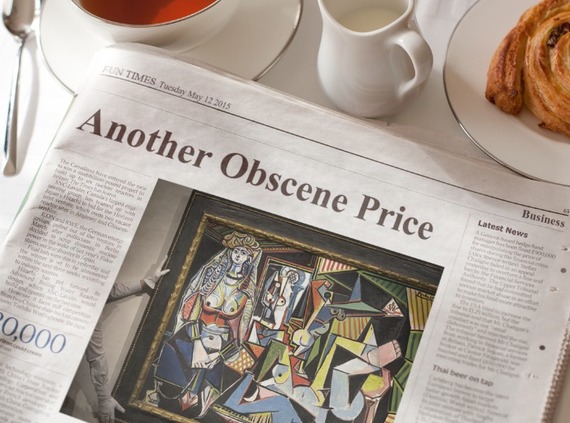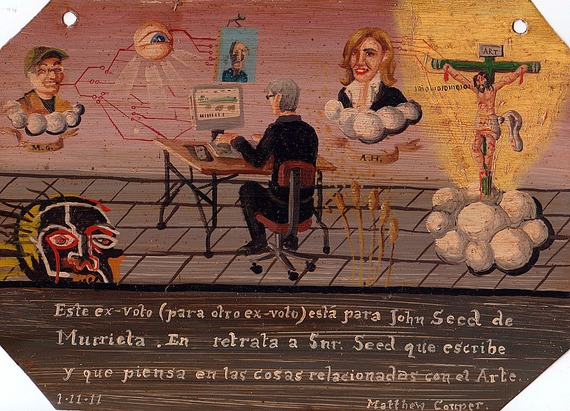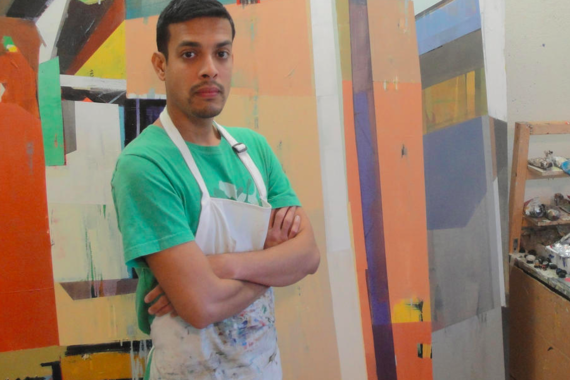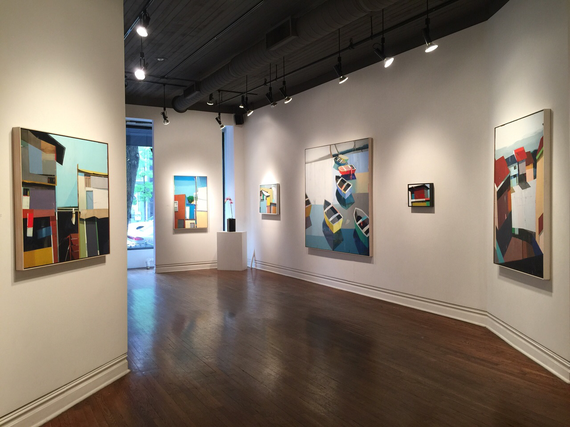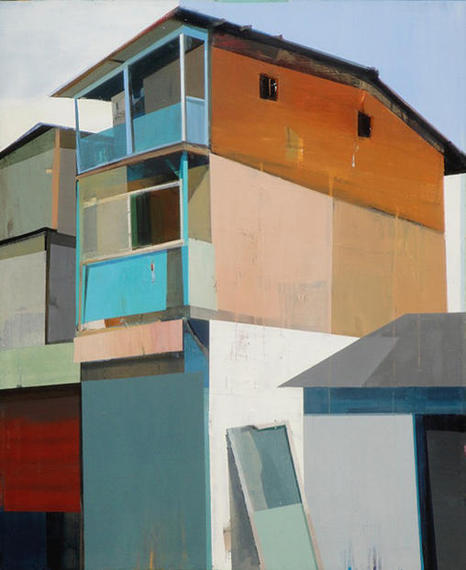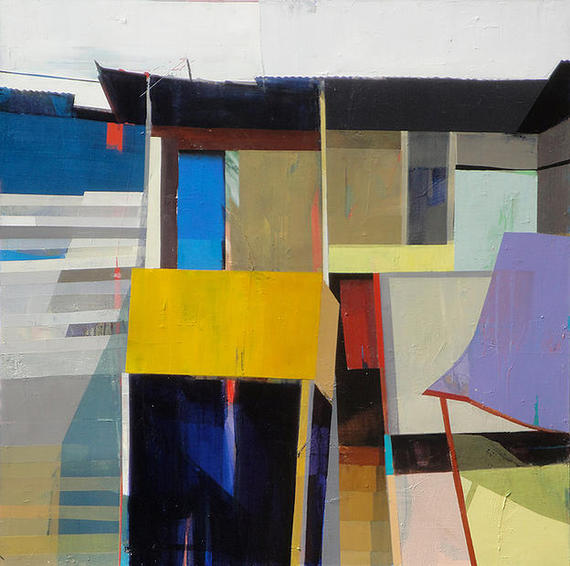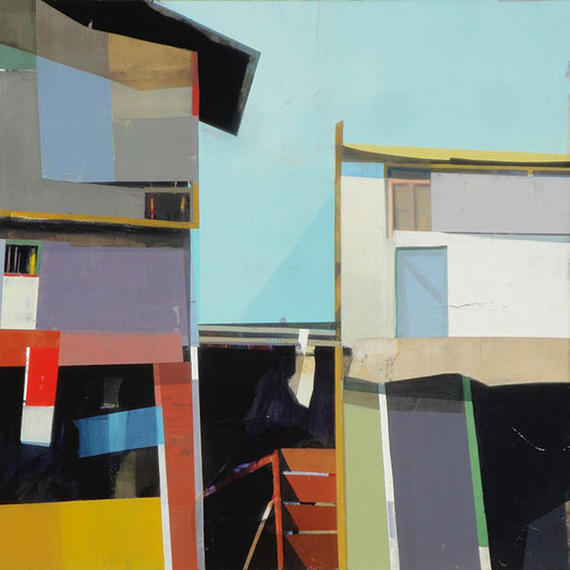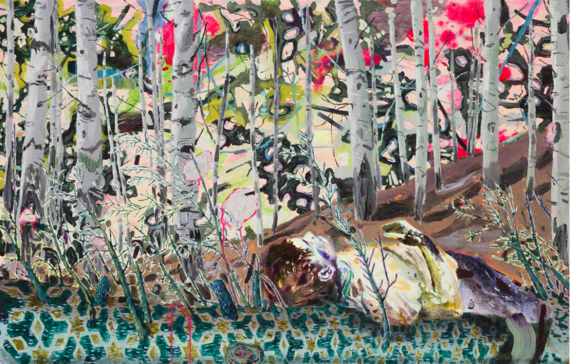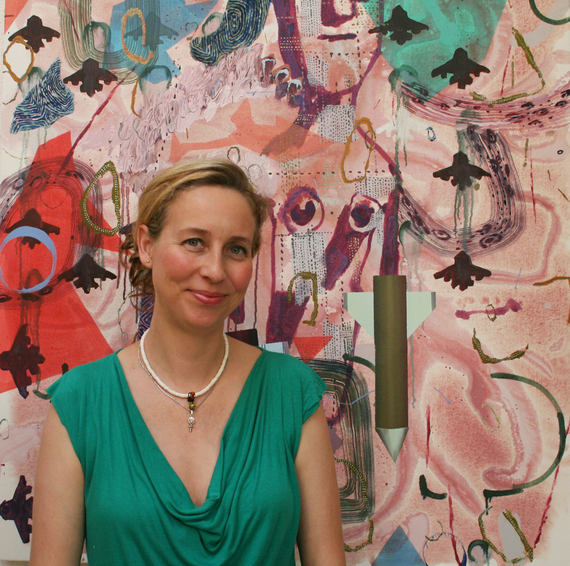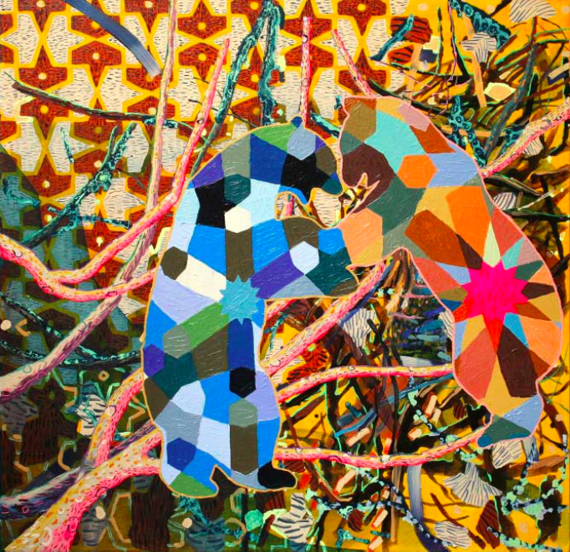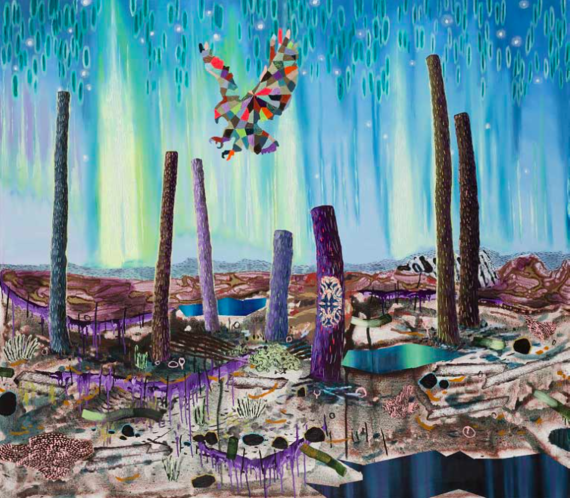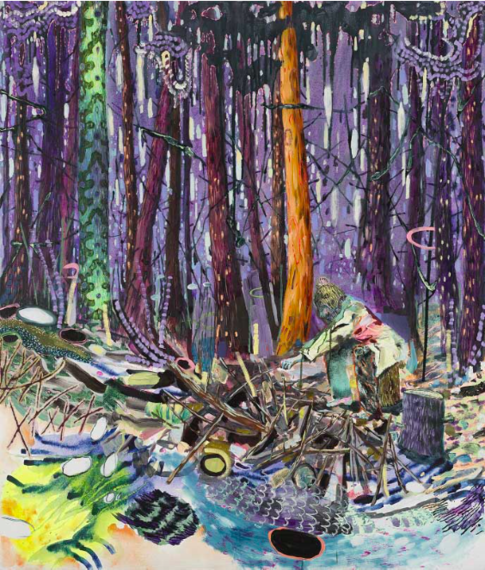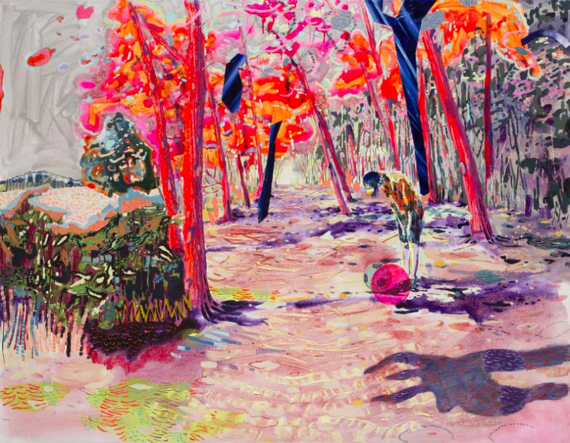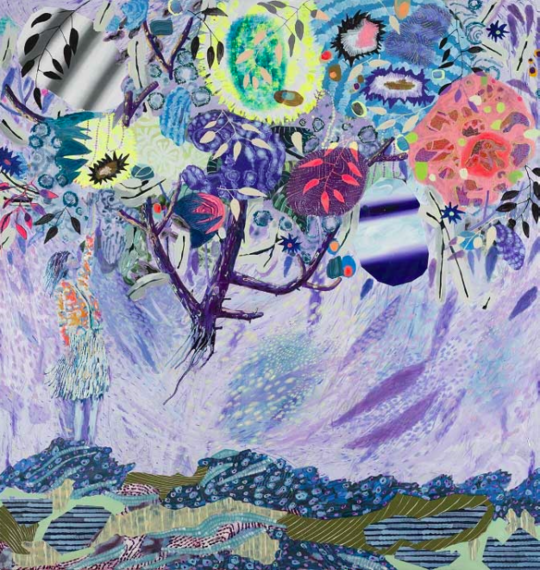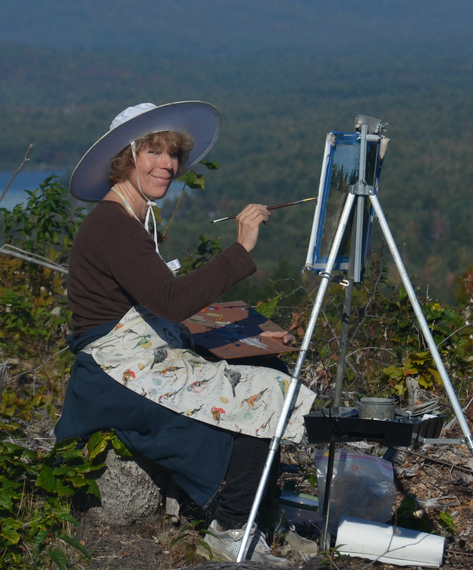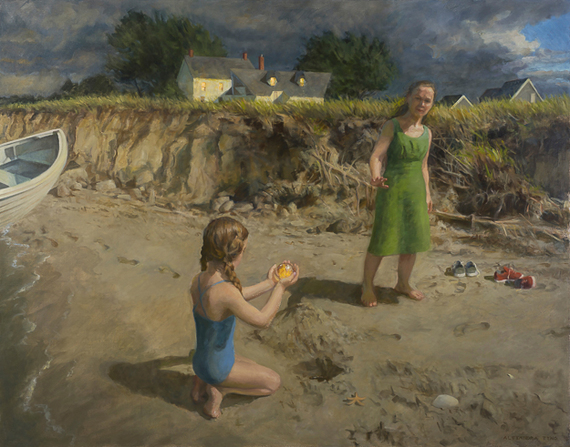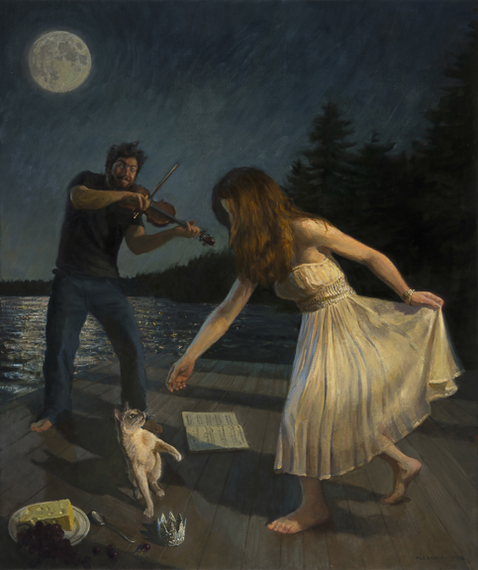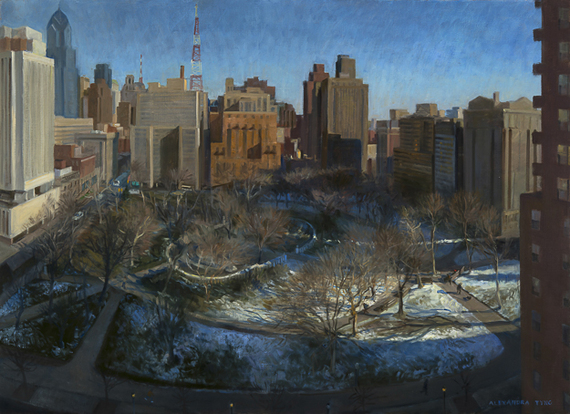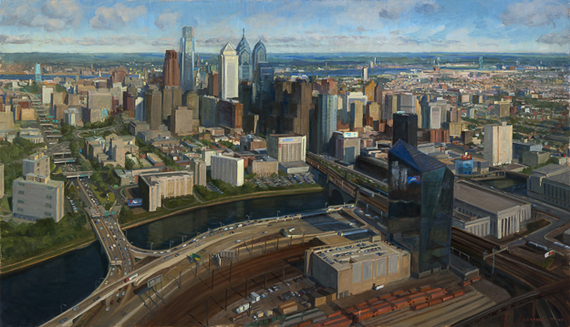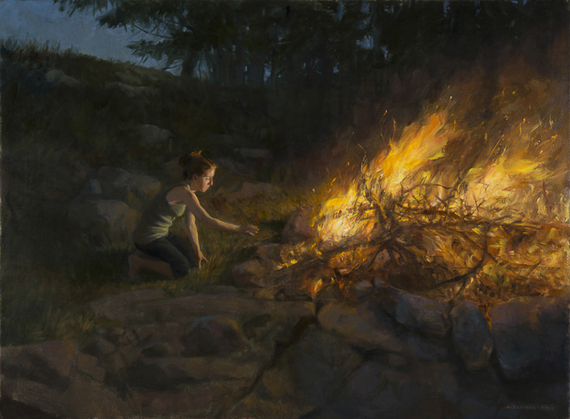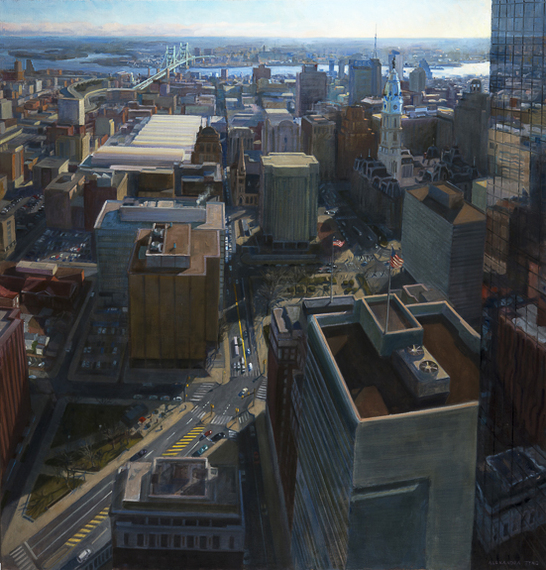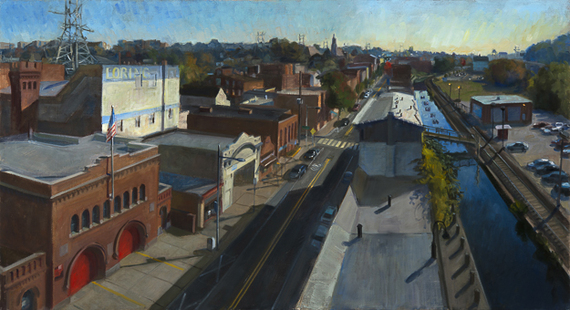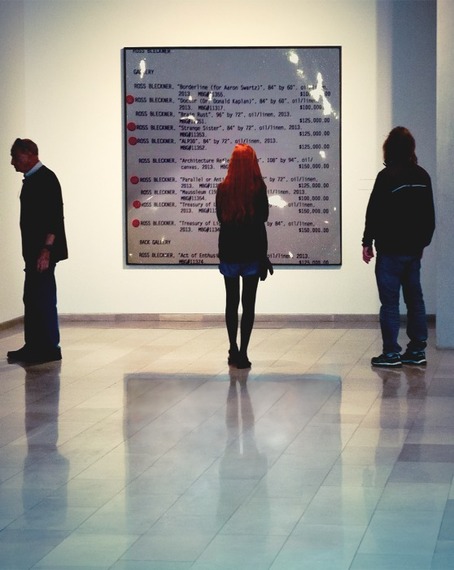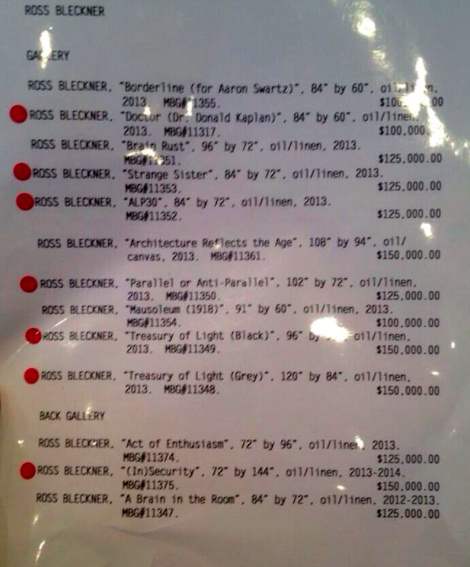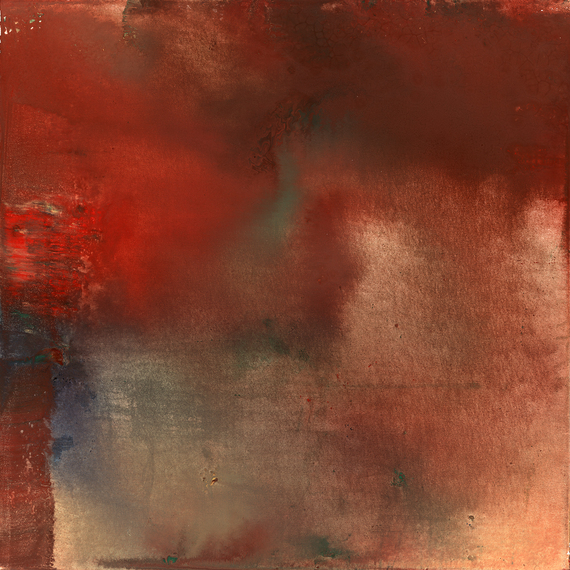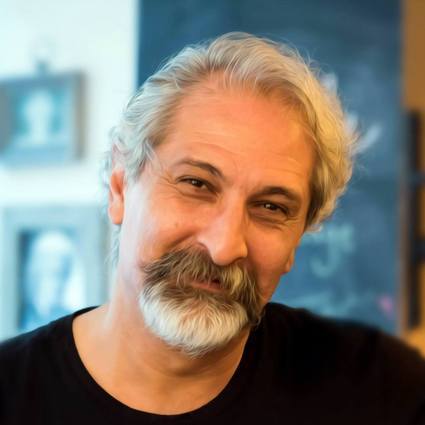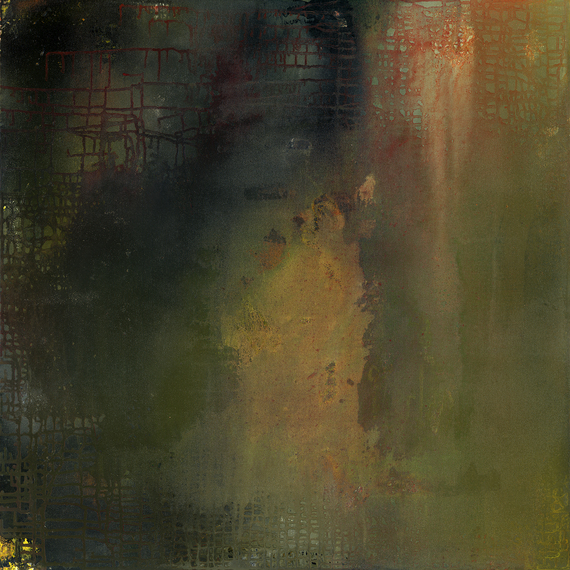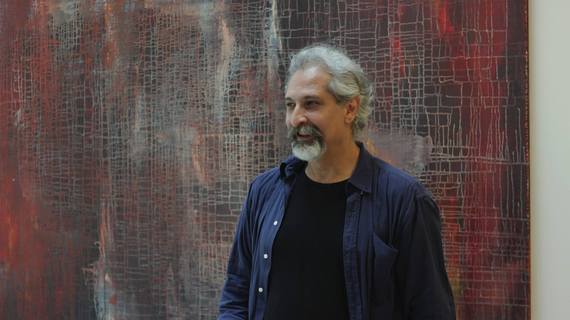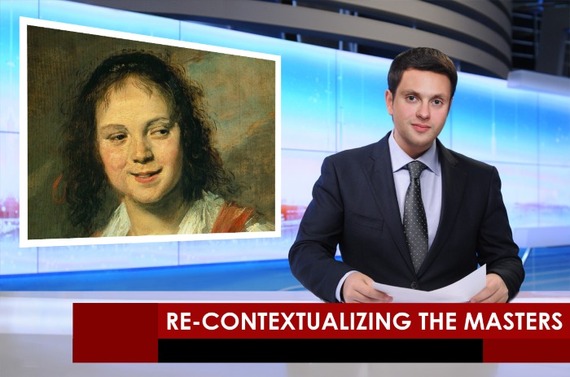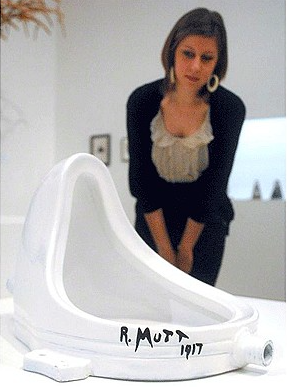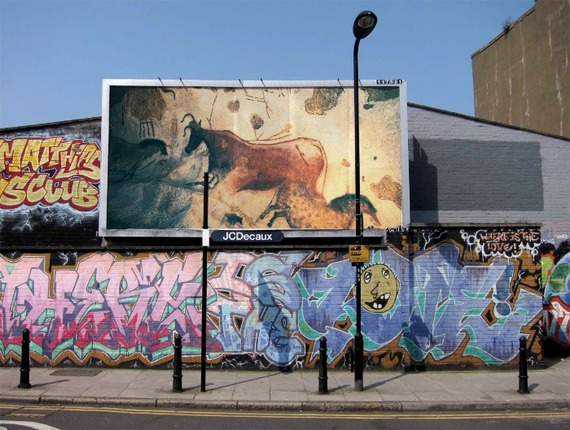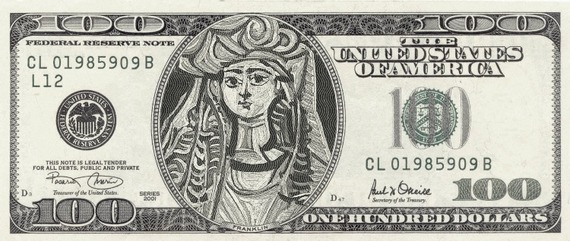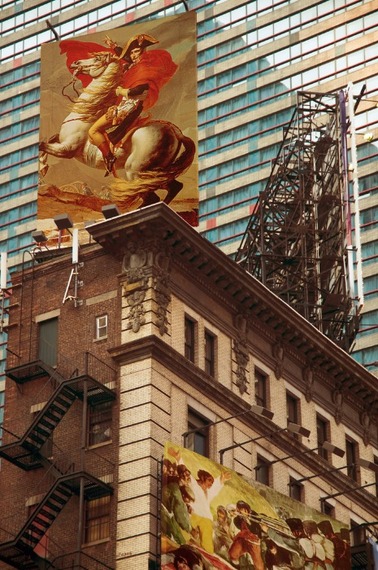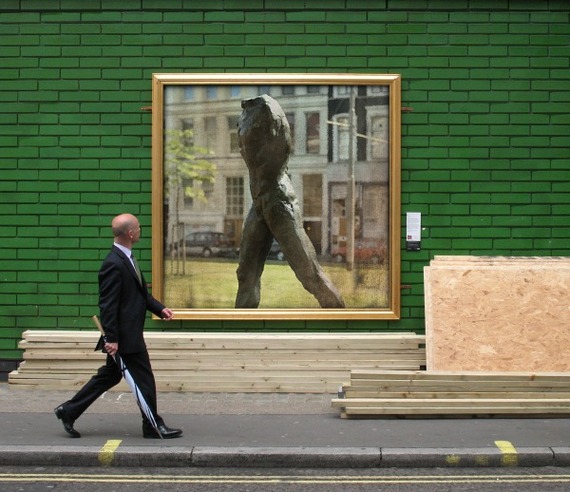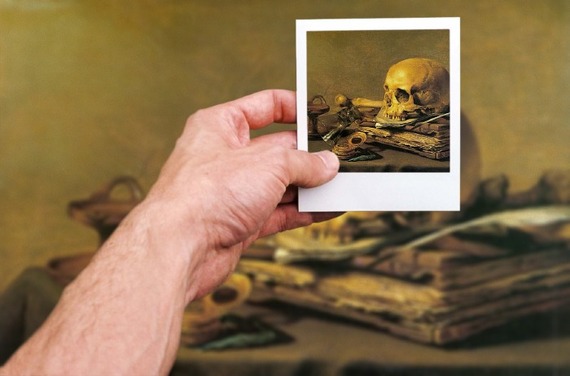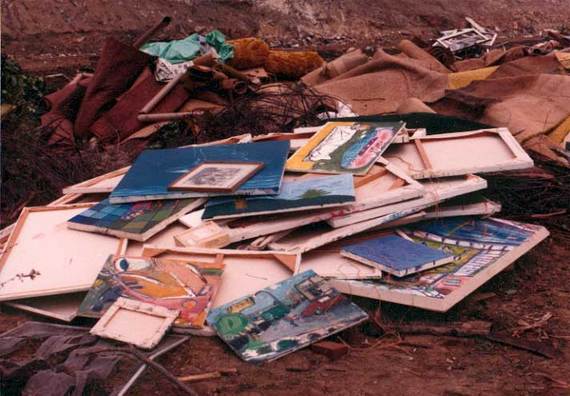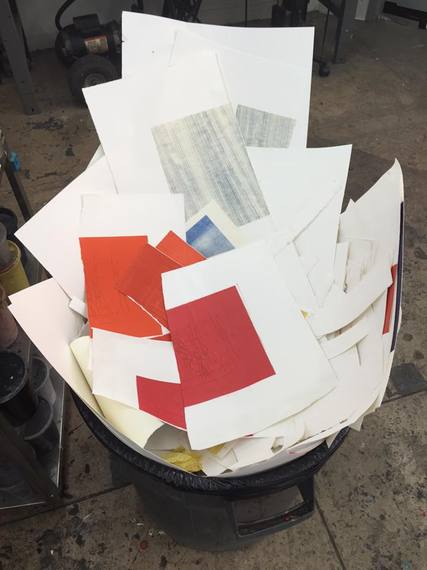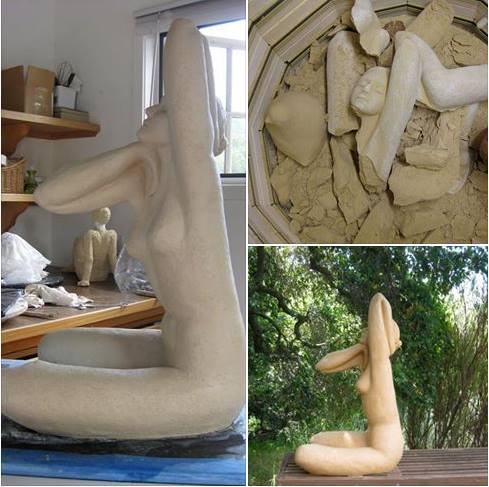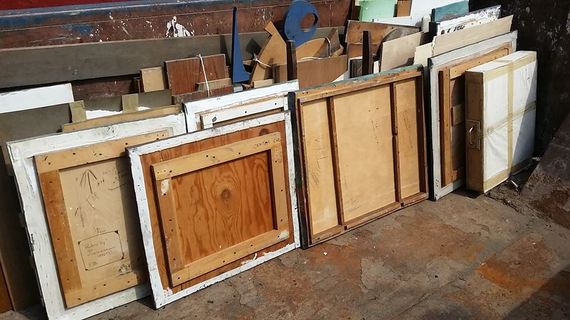![2015-07-01-1435777525-6647126-paintings_flames.jpg]() Digital collage by Photofunia.com based on a photo by David Michael Slonim
Digital collage by Photofunia.com based on a photo by David Michael Slonim"Every act of creation is first of all an act of destruction."― Pablo Picasso During my last year of graduate school one of my art professors came by my studio one evening to lead a group critique session. "Someday," he told me, "you will have a storage problem." Those were wise words. I took most of my graduate school work to the dump two years later.
![2015-07-01-1435781730-1494350-dump.jpg]() The author's post grad school dump run
The author's post grad school dump runBeing an artist means making things, and those things can pile up fast. Only lucky works of art survive -- or deserve to survive -- while numerous other works are slashed, smashed, burned or trucked to the dump. When I recently asked artist friends on my Facebook page to tell me stories about art and destruction I found that I had opened up a nerve-hitting topic. Artists destroy works both during and after their making, and they both savor and sometimes later regret their destructive impulses. Here, in edited form, are some of the many anecdotes, comments and bits of wisdom that artists and others had to offer on the topic of art and destruction.
***Stacy Rosende Bykuc
"Every piece has several destroyed compositions beneath. I call it 'process.' If a piece sucks, it's just not done."
April Zanne Johnson If, as an artist, you love everything you make all the time and are never self-critical, it is impossible to grow and evolve.
Maria Teicher"Shredded by hand with a razor (or ripped if paper)... the sound is intoxicating and freeing. Never had a single regret. I took photos before so I had it archived but have never looked back. I do a purge of work every 3-4 years and it's great. Not everything goes but those I am not proud of or works that have lost their meaning in my life."
Kate ShepherdJust today. Etchings.
![2015-07-01-1435780291-2877951-Kate.jpg]()
Nathan Lewis "I destroyed a 52 ft. wide painting. Tired of storing. Tired of hanging onto it. Some things are better in memory."
Lauren Levato Coyne "In an essay I just posted I detail throwing a six foot drawing out the window. No regrets."
Joe Fay "When I left LA I threw out a few really old paintings in the dumpster at my studio. Before I left I saw a homeless person had made a shelter out of them. I was happy. More recently I've been cutting up and recycling old paper pieces and using them on my painted wall reliefs."
Kenn Raaf "75% of the finished work I do is deconstructed. Cut, torn, burned, sanded and then reassembled and recomposed into something radically different. As for paper used in sketch work I oftentimes cut into strips and weave to use as texture in my abstract work, and filler in my sculpture."
Eric Armusik "I did a fire sale in 2010 and actually sold all 19 paintings. Some people wanted to crucify me for posting this video, in which I said I would set all the unsold work on fire, but it worked."
Carol M Dupre "A large, favorite, painting -- leading work in a series -- slashed with a razor blade because of a comment (from an intimate). The act still generates feelings of triumph following anguish, after many years (and a relatively easy divorce). Another 'purge' of some twenty canvases stacked in a city alley: sweet thanks that someone came with a trolley to carry them off with grace."
Mimi Jensen "To me, the perfect answer to 'What's your best painting?" is 'The next one.' That answer, which is not original to me, speaks to the realization that rarely does a finished work live up to the original vision in the artist's mind's eye. A few times I've finished a painting that was so off the mark that destroying it was my eventual response, one time even vigorously slashing a failed painting with my x-acto knife, providing high drama and great relief. That was years ago and I never regretted it."
Leslie Brown "While working on one large piece, I tore several of my own prints to collage into it. Throughout the process I kept saying to myself 'Nothing's sacred. Nothing's sacred'. Oddly enough it was a sort of homage to De la Tour's
Mary Magdalens. When the piece was finished I spray painted across the top the word Sanctified! My mentor Herb Olds used to say that in order to feel the true breadth of the artmaking process you must both create and destroy simultaneously. I think my best works employ this."
Jason McPhillips "A few days after meeting the woman who was to become my wife, I asked her to sit for a portrait drawing. I was focused on landscape at the time and a little rusty, but was still able to convey a lot of feeling in the drawing. A few years later, in gathering work together for a show of portrait drawings, I decided to rework (shakes head ruefully) one of the eyes from memory, as I just wasn't happy with it. Six hours later, though a symmetry issue was improved, the drawing had lost something vital. The 'corrected' eye now looked glued on, and that mysterious feeling of young love initially present in this time piece from our first few days together had left. I trashed it, painfully, and it didn't make the final cut for the show. Though I regret lacking the foresight to allow a piece it's integral imperfections, taking the piece to the point of collapse was still valuable. It taught me an invaluable lesson about how to rework things, which is to once again to readdress the whole."
Walt Morton "I have two strategies, the most common one is to just paint over the older work and make a new painting. But if the work is 'too good" to paint over', I have been leaving my work at thrift stores, the good will, or the Salvation Army since 1990. Often with cryptic messages inscribed on the back of the canvas. This is more fun because I have gotten phone calls and emails decades later from new owners asking for explanations. Bizarrely, some of these 'collectors' later bought work from me directly."
Domenic Cretara "About a year after I got my MFA I was teaching painting at a private art school in Boston. I had just finished a painting of a seated petite female model holding on to a hobby horse. I thought it was pretty good so I invited one of my colleagues, a respected painter and teacher to visit my studio and look at the painting. He took one look at it and started in on one of the most devastating critiques I had ever received. He must have talked for 30 minutes dissecting every fault real and imagined he could find. Not only was the color bad but the image was sentimental and the composition awkward. I was so devastated that after he left I took my palette knife and slashed the painting to ribbons in a fit of rage. About two months later the same colleague and I were talking at school and he said, "Hey, Domenic, where's that beautiful painting of the girl with the hobby horse you did recently?"
Heidi Wastweet "Some things don't stand the test of time. No regrets for anything I've destroyed (purged). There are a few remaining that I would like to destroy but don't have the strength to yet because I have so much invested in them. A body of work is like evolution in that one leads to the next and the next. Sometimes that evolution branches out in multiple directions. To destroy a piece takes it out of the gene pool and alters the direction moving forward."
Steven DaLuz "I was working on a medium-large commission, about 4' x 5'. I really was ambivalent about taking this commission...my heart was never fully in it. No matter what I did, I felt like I was engaged in battle with the piece. I turned it upside down, painted over it, altered the composition...but could not change the color scheme (client had specific requirements on that aspect). I let it "simmer" for a while, thinking I could get some kind of epiphany to help me salvage the work. I took it home and lived with it for about a week. Feeling particularly frustrated, I realized there was no hope for the work, so I tossed it into my backyard, stomped on it, squirted lighter fluid on it and torched it. (This piece had to die). Man, that felt good! I started fresh, changed my direction and produced a piece that was only marginally better and shipped it off to my gallery. The client was pleased, but I still felt I had delivered something I would not have hung in a gallery. That was the moment I reevaluated how I would accept commissions in the future. I take precious few to this day."
Britta Erickson "A very important Chinese art group, Xiamen Dada, held an exhibition in the mid-80s and then burned the works."
Danielle Fafchamps"I rushed to fire a 26" figure (interpretation of a Modigliani drawing) and it blew up in the kiln. But I loved it so decided to redo it even though the initial spark was gone. It took me forever to finish it. The second version (bottom right) was not quite right, the torsion at the waist was weak without the energy of the first one. The face seemed heavy. The hallali sounded when a friend said the right hand seemed to uncork the head. Off to the dumpster it went. That was a mistake I could have kept in in my backyard."
![2015-07-01-1435780466-9491612-danielle.jpg]() Lauri Lynnxe Murphy
Lauri Lynnxe Murphy "I usually destroy my work by accident or carelessness when I do, rarely deliberately, although sometimes I repurpose things. However, when I was recently going through a divorce and cleaning out my house of fifteen years I found a painting I had done about a tragedy in my life, as catharsis -- I forgot all about it. Since I didn't really want it to be seen and I didn't want to take it with me, I burned it in the back yard, which was it's own cathartic moment. Even though I'd forgotten about the painting (and honestly, it wasn't very good), it was completely freeing to have that smoke bathe over me and be released to the sky."
Joseph Bravo"Artists may destroy works because they are depressed or are in a creative slump, or simply because their tastes and aesthetic priorities have changed. I have spent the last few weeks mounting several retrospective exhibits of the artworks of the late Mel Casas. The curator of these exhibits has been frustrated by the fact that the artist destroyed many of the most important works from the beginning of his Humanscape series. These paintings were powerful pieces that demonstrated the formative ideas for a body of work that was to include over two hundred paintings produced over three decades. Yet for personal/sentimental reasons, he kept several of the lesser early works intact.
Now his posthumous retrospective exhibit tells a perplexing and incomplete story in which from a few relatively unimpressive works another body of exceptional works seem to arise ex nihilo. Historians and ordinary viewers have been denied the evolutionary context for this important body of work. Sometimes it takes decades for the significance of a group of paintings to become evident. Oft times, the artist is the poorest and least reliable judge of which of their artworks deserves to be recognized by history. This is why it is not generally desirable for artists to curate exhibits of their own work, they are too close to it, too subjective, too psychologically engaged with it to perceive it objectively. But we are not the best judge of what constitutes our failures or our successes and the totalities of our legacies are legitimately as much the product of our failures as our proudest achievements, perhaps even more so."
Farrell Brickhouse "Sometimes one has to let go of the old to truly make room for the new. Like shedding skin. Sometimes a dumpster is needed."
![2015-07-01-1435780546-9347926-farrell.jpg]() Virginia Bryant
Virginia Bryant "I left the first van full of my art (at least 500 paintings) with coke addicts when I left San Francisco in the late 80's."
Kurt Kauper "I've destroyed a few of my own paintings. I really wish I could destroy several that are out there, but I don't have easy access to. Might be worth a shot."
Colin Darke "I've painted over a lot of work because I thought I could create something better. About 17 years ago someone in one of my art classes stopped me from painting over a large painting, and now that painting is still hanging in my living room and gets probably the most compliments of all my work."
Cesar Santander "A legendary Canadian art dealer named Walter Moos told me a story about visiting George Roualt. As Walter drove up to his house, Roualt was burning some of his paintings in his yard. I commented that I never liked Roualt's work and Walter replied that Roualt obviously didn't like his own work either."
Michelle Waldele-Dick "I was once given the advice 'Save your kids the heartache of trashing the bad paintings after you die. Do it yourself now!' So I do!"
F Scott Hess "I burned all the erotic drawings I did as a kid. From the age of seven through high school I did thousands of drawings, and kept them in a padlocked foot-locker in my bedroom. I lived in a small Wisconsin town, where such things were considered a little odd! Before going to college I went into the backyard woods and burned them all. I was going to turn over a new leaf as I embarked on my university adventure, and not a single image survived my thorough cleansing. I regret deeply not having even a lone sample of these twisted little drawings that taught me to be an artist."
Ron Anteroinen "I've had 5 years worth of my art destroyed by fraudulent storage providers who threw it out in an alley in freezing rain after letting a rock band play in the space and vandalize it. A few years ago, I had to destroy all the stretchers for my paintings because I couldn't afford storage space anymore and had to put the work on rolls. So most of my work that was destroyed was destroyed because of circumstances beyond my control. I'm curious how often this is the reason for artists losing work more than self-editing and such."
Elin Pendleton "I destroyed 323 paintings in a bonfire over two days after realizing that the works held no merit for me other than being a learning moment (as in, 'I'll never make THAT mistake again.'). It was prefaced by the destruction of my marriage, and many of those marginal (to me) works represented that relationship and the connection through the art to it. It was freeing. My remaining works are of intrinsic value to me and fully represent my growth and artistic journey. 'Cleaning house' carries more meaning to artists, I think."
Vincent Desiderio
"I once spent 6 months on a large triptych. It was a totally depressing experience and the painting looked it. Nonetheless, I sent it to the gallery. It bothered me that people would see such an overworked, muddled piece of shit so I asked for it back. I intended to salvage it. Work on it some more but never got around to it.
One day, I got a call from Marlbough. A collector was interested in purchasing the painting and asked 'Did I still have it? Was it finished?' I told them that I still had a few more things to do with it. I unwrapped the painting and immediately took a knife to it. Quality control. I was out $50,000 but I never felt better in my life!"
Jim Wilsterman "When I was an undergraduate student in the 1970's, most of my instructors were from UC Berkeley and were there during the golden era of the1950's and 1960's. As a student, I made it a point to try to work for most of them in their studios because I saw my education as an artist as two tracks for my training. One was academic and in the classroom, but the second was based upon gaining as much real world art world experience as possible. After working for several other artists in the department, I was approached by the department chair Marjorie Hyde, who said that she had heard that I was becoming quite a good studio assistant among her colleagues. She asked if I was available to assist her on an ongoing basis. I was very pleased because she was a legendary artist and a very influential educator.She asked me to her home studio where I was to do various tasks to support her production.
The very first job I was assigned was to cut up and destroy just under a hundred paintings representing 5 years of her work. I was visibly shaken and upset by this as I loved and respected her paintings. When she saw my discomfort, she gently explained that a lot of these works were primarily experimental, and she considered them as exercises resulting from her working out her ideas and compositional direction. She wanted them destroyed as they were not up to her personal standards, and she did not want them out in the world representing her incomplete and unresolved ideas. Apparently she held herself to the same standards she demanded from her students. Since she was due to retire for our school soon, and was clearing out the older work for the big push for her upcoming retirement exhibition.
As painful as it was for me -- I cut up all of the paintings, saved the frames and stretcher bars and burned the canvases in her backyard fire pit. As I prepared to head home, she told me that in addition to my pay -- I could select any painting from her retrospective and take it home! That was an amazing and inspiring gift considering she completely sold-out the show in less than an hour after the gallery opened. It taught me a lesion about professional practices in my own work, and set me on my path as an instructor as well as an art collector. That painting is a painting I still own, and I treasure to this day!"
Regina Jacobson "I asked an elderly man if he would consider modeling for me; his face seemed to express an interesting history. He agreed, we did the photo shoot and he brought a selection of coats, hats and even a pipe that he wanted me to paint. I worked on the painting, a large scale portrait, for several months. I saw this person at the gym a couple of times a week and I would give him updates on the progress. One day he approached me with a letter from an attorney demanding that I destroy the painting. This person came to my studio, watched me cut the painting into little pieces and then I put it in a trash bag for him to take with him. I had to destroy all my photos that I had taken as well. I never saw him again; he never came to the gym again and I understood that he moved from the area."
Evan Woodruffe "The sound of tightly stretched canvas popping under the knife is delightful but terrifies anyone else witnessing it there's enough art out there without adding mediocre attempts to it and sometimes it must be done. Preferably in front of an unsuspecting audience, just for effect!"
Gord MacDonald "Art Students League 1985/86 = 8100 drawings. I kept 40."
Aron Kylene Rook "Ahhh! John . ... art + whiskey -- Smear, drip, wipe, glob ... And then comes morning ..... 'Ohhh Faaaahhhhk' ....."
Mark Mellon "I destroyed every piece i created from the years 1998 - 2002. Certain things ended. Certain things began. I decided the work i was doing was not work, but just nonsense. It was a method of starting over. i did not paint again until 2006. Then again, a few pieces stay with me even now, but for the most part I destroyed them, until 2011, when I finally began what i consider my real work now."
Julyan Davis "A piece of advice I have given over the years is this: when you reach that point where a painting is clearly unremarkable, and that no effort will raise it past that, do not lose your temper. Do not punch the canvas -- canvas will chafe your knuckles. Do not kick it across the room. Canvases do not fly well -- it might strike something of value in its trajectory. Kicking it will also destroy a reusable stretcher. Be calm. Reverse the brush in your hand. In a Sicilian fashion, lean into the work and whisper the point of the handle through the center of your canvas. Set aside to dry. Re-stretch at leisure to some cheery music..."
